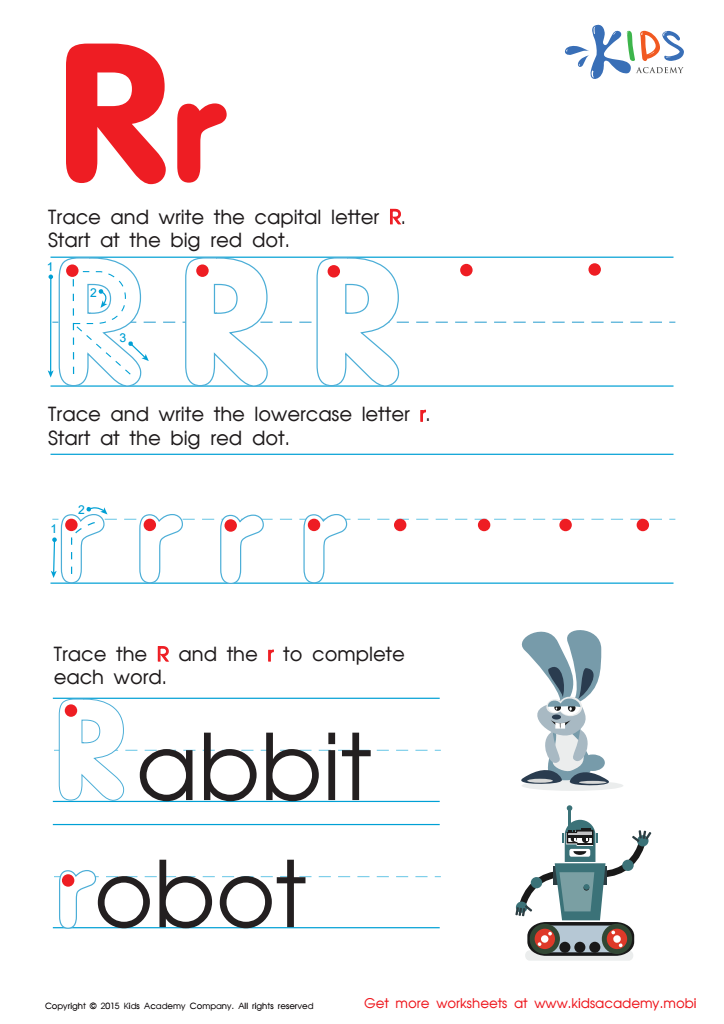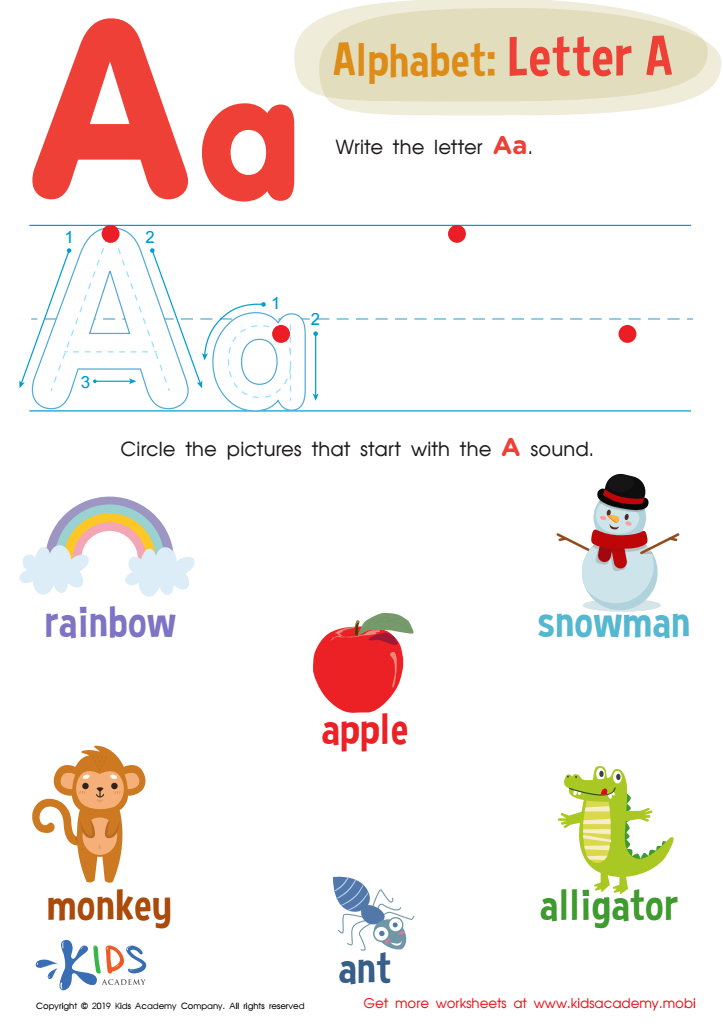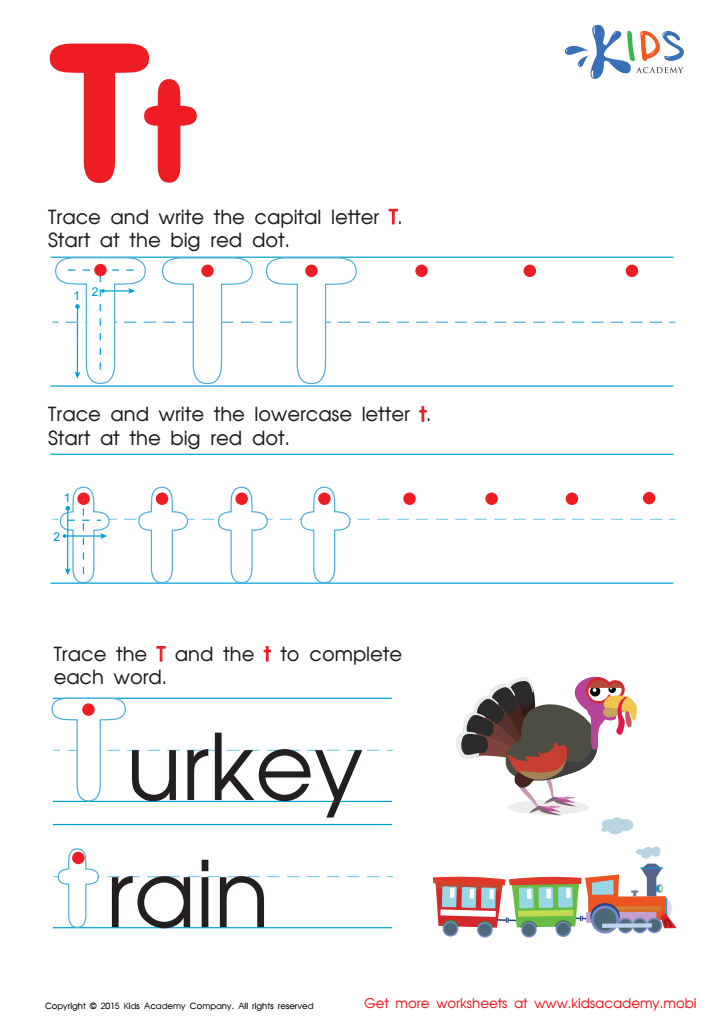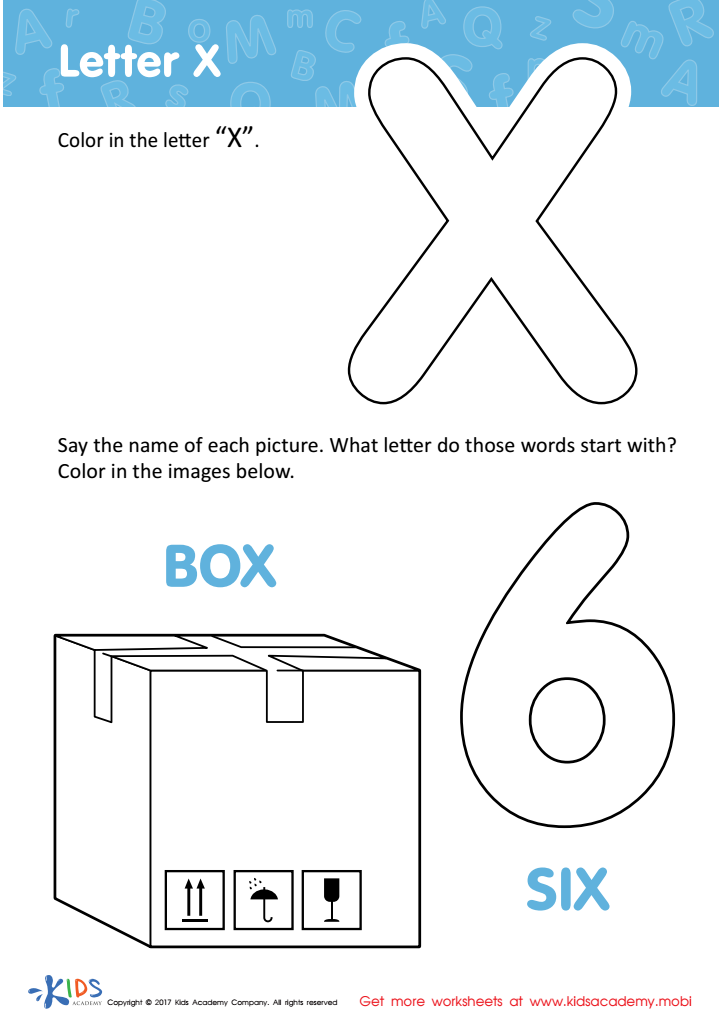Alphabet tracing Letter Recognition Worksheets for Ages 6-7
8 filtered results
-
From - To
Help your child master the alphabet with our specially designed Alphabet Tracing Letter Recognition Worksheets for Ages 6-7. These engaging and educational worksheets promote literacy by helping young learners trace, recognize, and write each letter, solidifying foundational writing and reading skills. Each worksheet is thoughtfully created by education experts to combine fun and learning, ensuring that kids stay motivated and make meaningful progress. Through colorful visuals and clear tracing guidelines, your child will gain confidence in their alphabet knowledge while developing essential fine motor skills. Start their journey to reading success today with these comprehensive worksheets!


Letter R Tracing Page


Letter P Tracing Page


Letter Q Tracing Page


Letter H Tracing Page


Letter A Tracing Worksheet


Letter T Tracing Page


Letter D Tracing Page


Letter X Coloring Sheet
Alphabet tracing and letter recognition are foundational skills for children ages 6-7, forming the cornerstone of their literacy development. Parents and teachers should emphasize these activities because they significantly contribute to a child's ability to read and write.
Firstly, these skills foster fine motor development. When children trace letters, they refine their hand-eye coordination and dexterity—essential for writing clearly. This practice helps make the transition from forming letters to writing words and sentences smoother.
Secondly, mastering letter recognition ensures that children can distinguish between different letters and understand their related sounds. This phonemic awareness is critical for decoding words—an essential part of early reading. Recognizing P, B, Q, and D as distinct shapes helps to prevent confusion in reading and writing.
Additionally, engaging in alphabet tracing and letter recognition activities instills confidence and encourages a sense of accomplishment. A child who can accurately identify and write letters is likely to be more enthusiastic about reading and learning in general, setting the tone for their academic journey.
Lastly, these activities provide a foundation for more complex literacy skills. As children become more comfortable with basic letters, they'll more easily grasp concepts like spelling, sentence structure, and punctuation. Early proficiency in these areas makes future learning experiences more accessible and enjoyable, fostering a lifelong love of learning.

 Assign to My Students
Assign to My Students




















